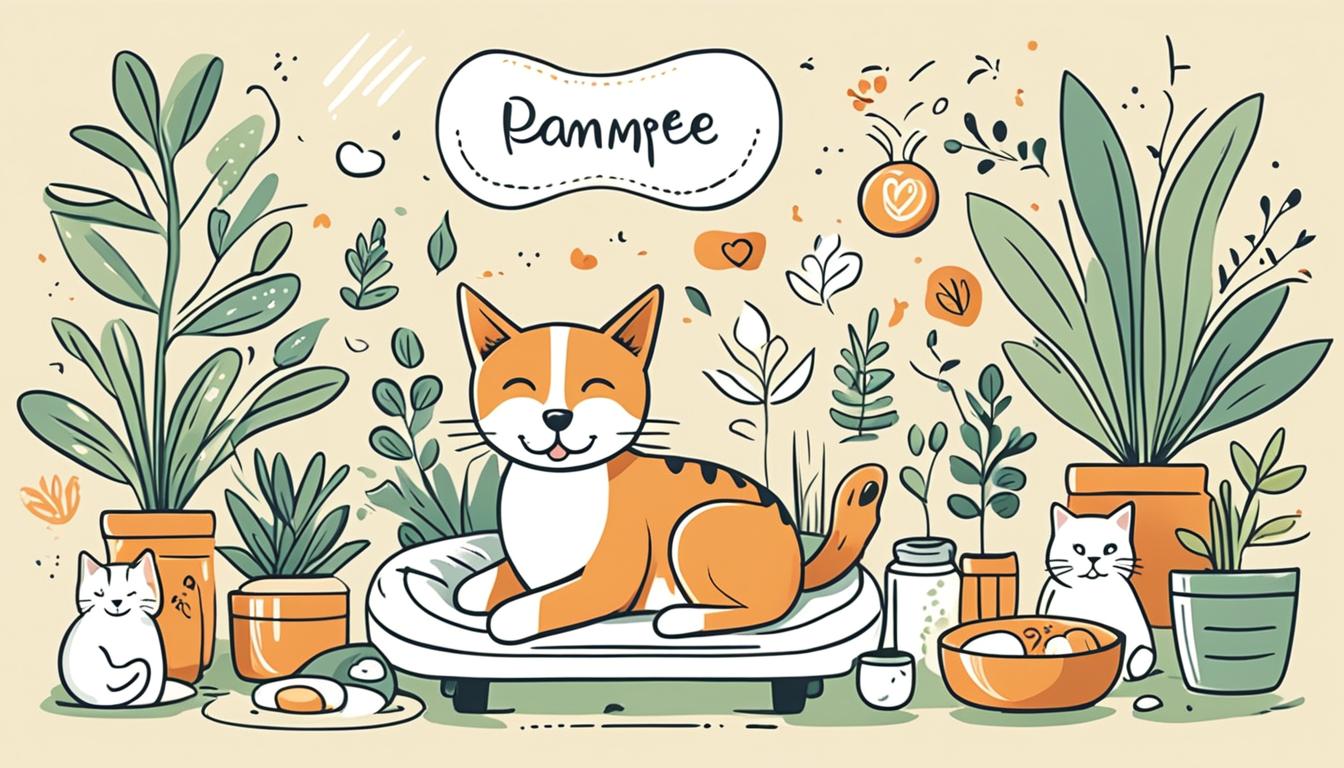Training Cats: Understanding and Addressing Common Behaviors
Training cats involves understanding common behaviors like inappropriate scratching, spraying, and litter box accidents to foster harmonious relationships. Cats exhibit instinctual behaviors, making it essential to tailor training methods accordingly. To address litter box accidents, assess placement and size, ensuring one box per cat plus an extra one. For scratching behavior, provide suitable scratching posts and redirect with rewards. Neutering can reduce spraying, especially when done early. Despite the challenges in training due to cats’ dietary preferences and solitary nature, establishing a consistent routine with positive reinforcement is key. Understanding these behaviors is crucial for effective training.
Key Takeaways
- Neutering before maturity helps reduce spraying behavior.
- Provide suitable scratching posts near preferred areas.
- Understand cats’ instincts for effective training.
- Use positive reinforcement and high-value treats.
- Consistent routine and patience foster successful training.
Necessity of Training for Cats
Training is essential for cats to address problematic behaviors and foster harmonious relationships with their human companions. Cats exhibit instinctual behaviors that may cause challenges in a domestic setting. Understanding these behaviors is crucial for implementing effective training techniques.
By recognizing that cats have unique instincts and needs, owners can tailor training methods to suit their feline friends. Training techniques such as positive reinforcement, clicker training, and environmental enrichment can help modify behaviors like inappropriate scratching or aggression.
Through patience, consistency, and a deep understanding of cats’ natural behaviors, owners can successfully train their cats and strengthen the bond between feline companions and humans.
Litter Box Accidents
Cats can quickly learn to use the litter box when provided with suitable conditions and proper training. If litter box accidents persist, it is essential to assess the litter box placement and size. The litter box should be large enough for the cat to comfortably move around and eliminate waste.
Cats may avoid using the litter box if it is too small or if it is placed in a noisy or high-traffic area. Additionally, having one litter box per cat plus an extra one can help prevent accidents. Ensuring the litter box is in a quiet, easily accessible location and of appropriate size is crucial for promoting consistent litter box use and reducing accidents.
Inappropriate Scratching Behavior
When addressing inappropriate scratching behavior in felines, it is essential to understand the natural instinct driving this behavior. Cats scratch to mark territory, stretch their muscles, and shed the outer layer of their claws.
To prevent furniture damage, provide appropriate scratching posts made of materials like sisal or cardboard. Place these posts near the areas where the cat likes to scratch. Encouraging appropriate scratching involves making the posts appealing by using catnip or toys.
Redirect the cat to the scratching post whenever they scratch furniture, and reward them when they use it correctly. Consistency and positive reinforcement are key to modifying this behavior effectively and ensuring harmony in the home.
Spraying Behavior
Understanding the reasons behind a cat’s spraying behavior can provide valuable insights into addressing this common issue, particularly in male cats. Neutering before maturity is crucial, as it can significantly reduce spraying behavior. Late neutering might not entirely eliminate spraying tendencies. Behavioral triggers such as stress, territorial disputes, or the presence of other intact cats can also contribute to spraying. Early intervention through neutering can help manage and prevent spraying behavior effectively. Below is a table outlining the benefits of neutering and common behavioral triggers for spraying behavior:
| Neutering Benefits | Behavioral Triggers | Impact |
|---|---|---|
| Reduces spraying | Stress | Prevents territorial issues |
| Prevents roaming | Presence of other intact cats | Improves overall behavior |
| Decreases aggression | Changes in the household routine | Enhances cat’s well-being |
Challenges in Training Cats
Successfully training cats poses unique challenges due to their specific dietary preferences, solitary nature, and differing behavior patterns compared to dogs. Cats have particular dietary preferences that can make traditional treat-based training methods less effective.
Unlike dogs, cats are solitary animals, which can impact their willingness to engage in social interactions during training sessions. This lack of social interaction can influence the effectiveness of training techniques that rely on social reinforcement.
To overcome these challenges, it is essential to find high-value treats that appeal to the cat, establish a consistent training routine, and prioritize building trust. Understanding and adapting to a cat’s individual needs and behaviors are key factors in successfully training these independent and unique animals.
Understanding Instinctual Behaviors
To effectively address a cat’s behavior, it is imperative to comprehend their instinctual tendencies and how these innate behaviors influence their actions. Cats possess natural instincts that drive their behaviors, such as hunting, marking territories, and climbing. Understanding these instincts is crucial for implementing effective training techniques.
Behavioral analysis strategies can help identify the root causes of certain behaviors, allowing for targeted interventions. Instinctual training techniques involve working with a cat’s natural behaviors rather than against them, promoting a more successful training experience. By acknowledging and respecting a cat’s instincts, trainers can tailor their approach to encourage desired behaviors while minimizing unwanted ones.
This understanding forms the foundation for a harmonious relationship between cats and their owners.
Solutions for Problem Behaviors
When addressing problem behaviors in cats, implementing tailored solutions based on their natural instincts is crucial for effective training outcomes. Behavior modification and reinforcement techniques play a significant role in addressing issues such as litter box accidents, inappropriate scratching behavior, and spraying.
Environmental enrichment can also aid in behavior modification by providing cats with appropriate outlets for their natural behaviors. For litter box problems, ensuring the right size and placement of boxes, as well as having one box per cat plus an extra one, can help.
In the case of scratching, redirecting the behavior to suitable posts and rewarding appropriate scratching can be effective. Neutering male cats early can help manage spraying tendencies. Understanding the reasons behind these behaviors is essential for successful training outcomes.
Importance of Positive Reinforcement
Behavior modification techniques, such as positive reinforcement, play a crucial role in shaping the behaviors of cats, including addressing issues like litter box accidents, inappropriate scratching behavior, and spraying tendencies.
Positive reinforcement involves rewarding desired behaviors to encourage their repetition. When training cats, it is essential to establish trust and use consistent rewards to reinforce positive actions. Cats respond well to rewards like treats, praise, or playtime when they exhibit the desired behavior.
Frequently Asked Questions
Can Cats Be Trained to Perform Tricks Like Dogs?
Cats can be trained to perform tricks like dogs through clicker training, cat treats, positive reinforcement, and a consistent training schedule. Understanding their unique behaviors and preferences is essential for successful training sessions.
How Can I Stop My Cat From Meowing Excessively?
Excessive meowing in cats can be managed by identifying triggers and utilizing distraction techniques. Behavioral modification through positive reinforcement is key. Understanding your cat’s needs and providing mental and physical stimulation can help reduce incessant meowing.
What Are Some Effective Ways to Prevent Cats From Jumping on Countertops?
Preventing cats from jumping on countertops involves using training methods that create aversion to counter space. Employ deterrents like double-sided tape, aluminum foil, or motion-activated devices. Encourage the use of cat trees or designated high spaces. Consistent redirection and positive reinforcement are key.
Is It Possible to Train a Cat to Walk on a Leash?
It is indeed possible to train a cat to walk on a leash. With patience and proper training methods that align with feline behavior, outdoor exploration on a leash can be a rewarding experience for both cat and owner.
How Do I Address Aggressive Behavior in My Cat Towards Other Pets?
Addressing aggressive behavior in cats towards other pets requires a combination of socializing techniques and behavior modification. Gradual introductions, positive reinforcement, and creating separate spaces can help reduce aggression. Consultation with a veterinarian or animal behaviorist may provide additional guidance.
Conclusion
In conclusion, when it comes to training cats, understanding their instincts and behaviors is essential for addressing common issues. These include litter box accidents, inappropriate scratching, and spraying tendencies. By employing targeted strategies and positive reinforcement, pet owners can create a harmonious environment that fosters positive relationships with their feline companions.
As the adage goes, ‘A well-trained cat is a happy cat,’ highlighting the importance of proactive training efforts in promoting a fulfilling bond between cats and their owners.
















